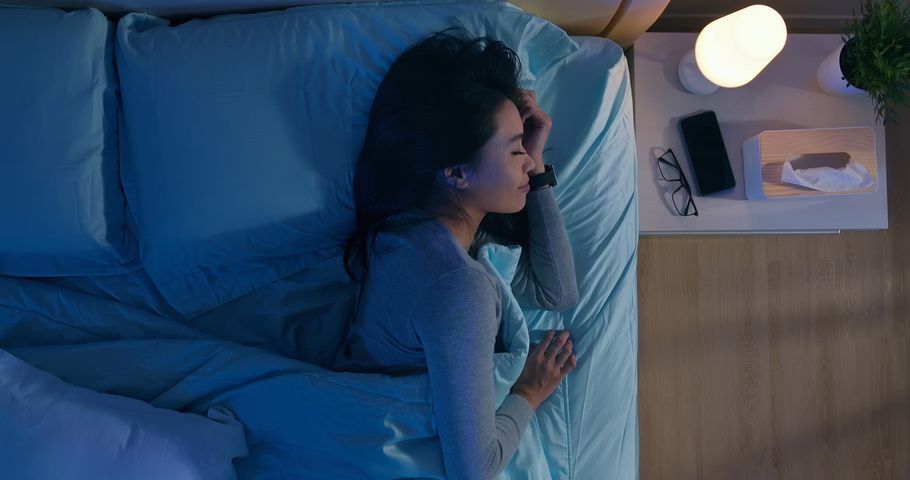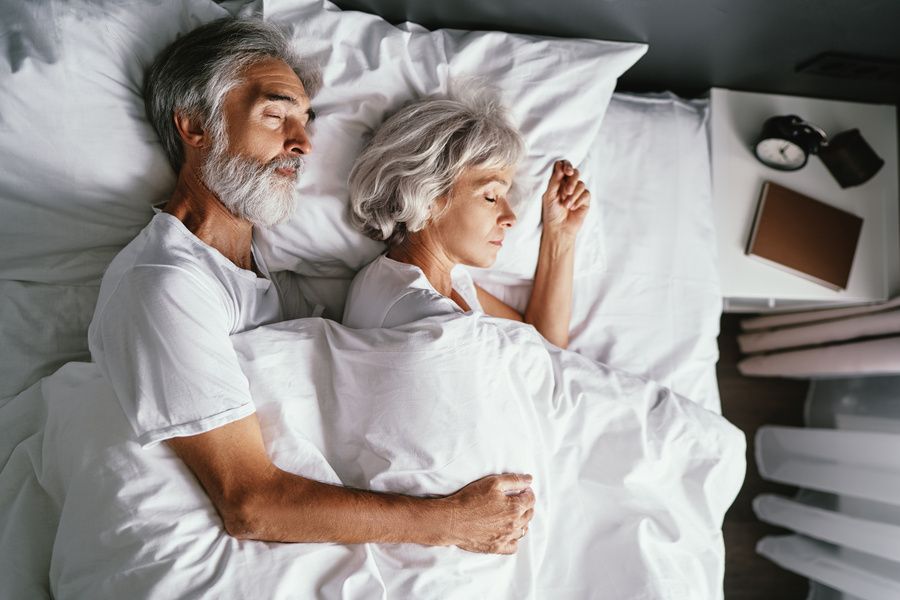
Are you struggling to get a good night’s sleep due to lower back pain? You’re not alone. Research has shown that 7.5% of the world’s population currently experience some form of discomfort in their lower back, preventing them from getting around or resting as easily as they once did.
Our lower back is a highly complex part of the body. It features an interwoven series of bones and tendons, including five vertebrae, lumbar spine, discs, muscles, and ligaments. It is the lower back that is responsible for supporting the weight of our bodies, playing a vital role in standing, walking, sitting, and lying down. This means that when something goes wrong with one of these, it can have a serious effect on the rest of the area and body.

What are the different types of lower back pain?
While there are a huge number of factors that could be causing your lower back pain, the discomfort will fall into one of two options: acute or chronic pain.
Acute lower back pain is discomfort that lasts for a short amount of time. This could be anything from a few days to several weeks, and it is often caused by an injury. While it can be incredibly uncomfortable at the time, once the injury has healed, there will be no long-lasting discomfort or mobility issues.
On the other hand, chronic lower back pain is a discomfort that lasts for far longer. Individuals could experience pain that lasts for several months at a time, preventing them from being able to rest or move without irritation. This type of pain is often caused by long-lasting conditions such as arthritis.
Are lower back pain and sleep connected?
Experiencing lower back pain can significantly interrupt your sleep, and research has shown that this can be a mutually reinforcing pattern. The more your sleep is interrupted, the more painful your condition can become.
When our body is not able to rest at night, our ability to heal is majorly impaired. This increases our recovery time. However, alongside a slower recovery period, a lack of sleep also seriously impacts the chemicals in our brain, which can make pain seem more intense.
The positions that we sleep in can also cause the pain to increase. Sleeping in the wrong position can place pressure on our spine and muscles, causing those feelings of discomfort and stiffness when we wake up.
What are the best sleeping positions for lower back pain?
Changing how you sleep at night can transform the pain and stiffness that you experience. If you find that lower back pain is preventing you from living your life as you want, then try adopting some of these positions when you head to bed at night:
1) Sleep on your side with a pillow between your legs
If lower back pain is causing you issues when you lie on your back, then try changing your position to your side. To do this, lay on your right or left side, with your shoulder making full contact with the mattress. Once you are in this position, place a small cushion or pillow between your knees. Use an additional one between your waist and mattress if you find that there is a gap.
It is important to remember that when adopting this position, you should make sure that you change position each night. Otherwise, this could cause muscle imbalance. Imbalance could make the discomfort more prominent or even lead to more serious conditions such as scoliosis.
While sleeping on your side is not enough to reduce lower back pain, the addition of the pillow between your knees helps to create better alignment between your spine, pelvis, and hips.

2) Sleep in the fetal position
Another great position to help ease lower back pain is to sleep in the fetal position. This is a particularly useful option if your discomfort is caused by a herniated disc. To do this position, lay on your back and then gently roll over to your left or right side.
From there, bring your knees up towards your chest, curling your whole torso towards your knees. As with the previous position, make sure that you are regularly switching sides to prevent causing further issues.
Laying in the fetal position ensures that there is less pressure on the vertebrae in your spine. One of the most common causes of lower back pain is when the discs in between the vertebrae become misaligned, so this position helps to open the space between these.
3) Sleep on your stomach
If you find that back pain is causing you significant pain during the night, then sleeping on your stomach can be very beneficial. This position can place additional pressure on your neck, so try placing a pillow underneath your pelvis and lower abdomen. Some people actually find that when lying in this position, they do not need an additional pillow under their heads.
Laying on your stomach is particularly useful for those individuals who have a degenerative disc disease. The position helps to ease any pressure and stress on the discs in your spine.
4) Sleep on your back with a pillow under your knees
While the previous three positions have been focused on sleeping on your front or side, sleeping on your back with a pillow under your knees can also be a positive position. Adding a pillow under your knees will help to keep your spine in a neutral position. Placing a small rolled up towel under your back can provide further support.
Sleeping in this position helps to ensure that your weight is spread evenly across the body. This places less pressure on key parts of your spine.

5) Sleep reclined on your back
Sleeping in a reclined position can be a great way to help ease your lower back pain. For certain conditions, such as isthmic spondylolisthesis, lying at a reclined angle can create a positive angle between your thighs and spine. This reduces the pressure and discomfort you experience.
While these five positions can help you reduce the lower back pain you experience, they are not the only solutions. If these do not work, then try various positions. Focus on ensuring that your ears, hips, shoulders, and spine are always kept aligned.
Is arthritis causing your lower back pain?
Lower back pain can be caused by a huge array of issues, but if you find that your arthritis is preventing you from sleeping at night, then JointFuel360 is here to help you. Our unique all-natural joint supplement has been developed by Jupiter Laboratories to help you alleviate pain, improve flexibility, and reduce inflammation.
Getting to work in as little as seven days, our 100% drug-free supplement uses science-backed ingredients to help you with long-term pain relief. So if you are finding that lower back pain is causing you discomfort at night and preventing you from getting a restful and relaxing sleep, get in touch today to find out more about our unique formula!
The post The Best Sleeping Positions for Lower Back Pain appeared first on Joint Fuel 360.